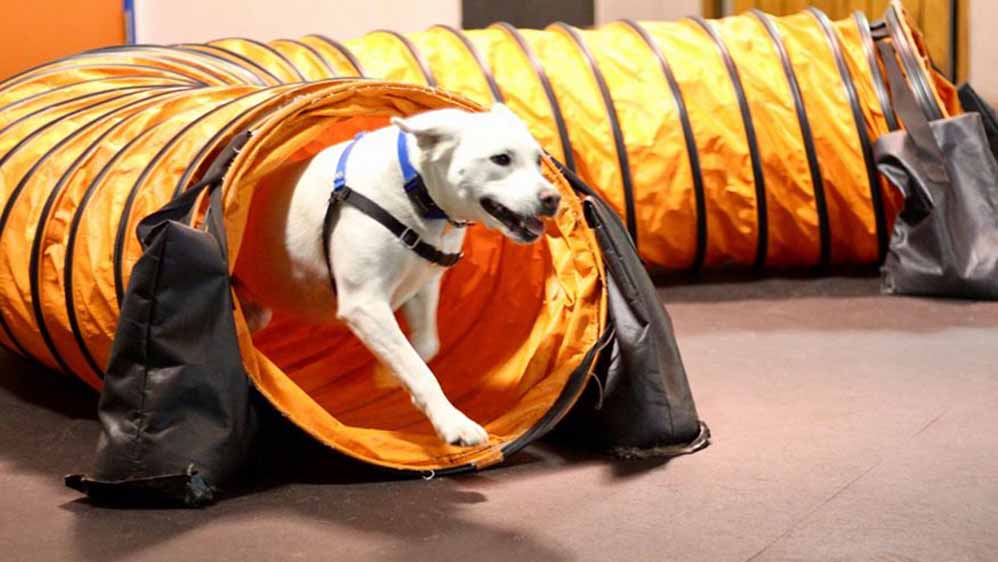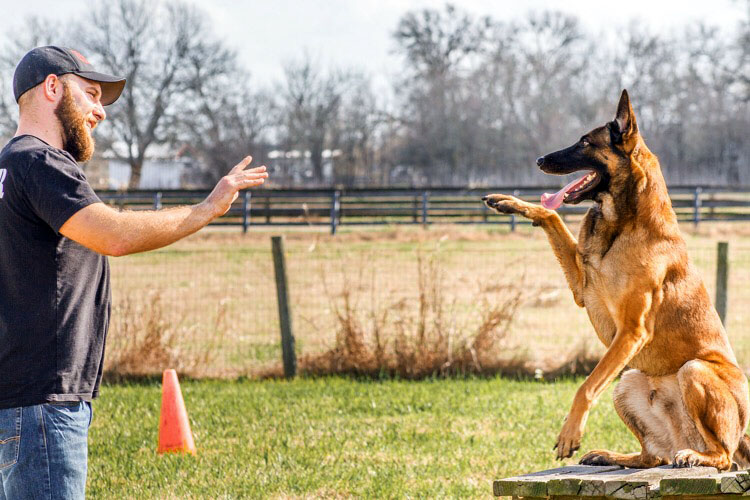Necessary Tips for Successful Dog Training: An Overview for Pet Owners
Efficient canine training is a complex process that requires a tactical strategy tailored to both the pet's character and the proprietor's objectives. Secret elements such as establishing constant commands, employing positive support, and promoting very early socialization play crucial functions in promoting a well-adjusted canine buddy. Lots of pet dog proprietors experience obstacles that can impede progression, leading to aggravation and uncertainty. Comprehending how to navigate these barriers can substantially boost the training experience, eventually changing the connection in between proprietor and pet. What are the important techniques that can be used to guarantee success in this endeavor?
Comprehending Dog Habits
Understanding pet dog behavior is important for effective training and promoting an unified relationship in between pooches and their owners. dog training. Dogs communicate largely via body language, articulations, and activities, making it essential for owners to analyze these signals accurately.

Socializing plays a substantial role in dog behavior; exposure to various settings, people, and various other pets can considerably affect a pet's temperament. Furthermore, aspects such as breed qualities and private character ought to direct training approaches, as some breeds might have particular behavior attributes that necessitate customized strategies. By comprehending these components, owners can produce an encouraging setting that urges positive behavior, causing effective training results and a deeper bond with their pets.
Developing Constant Commands
Efficient interaction with your pet starts with establishing consistent commands. This foundational aspect of training is crucial for cultivating understanding between you and your pet dog. Uniformity in the commands you utilize guarantees that your pet dog can reliably associate certain words or phrases with the preferred habits.
When selecting commands, choose clear, unique words that are easy to state and distinguish from each other. Avoid using similar-sounding commands that might confuse your canine. For example, utilizing "sit" and "stay" is appropriate, yet "sit" and "struck" could cause misconceptions.
Furthermore, preserve the same tone and volume for each command. Dogs are delicate to singing cues, so differing your tone can produce confusion.
It is just as vital to make sure that all relative are on the very same page concerning the commands utilized. A united front in command use will certainly protect against blended signals and enhance the knowing procedure.
Favorable Reinforcement Techniques
The power of favorable reinforcement in pet dog training depends on its capability to motivate wanted habits via benefits and praise. This technique is grounded in the principle that habits adhered to by desirable outcomes are most likely to be duplicated. By integrating favorable reinforcement right into your training regimen, you can successfully shape your dog's behavior in a positive fashion.
To implement favorable reinforcement, it's vital to recognize what encourages your pet dog, whether it be treats, playthings, or spoken appreciation. When your pet dog performs a desired action, such as resting on command, promptly compensate them with a reward or love. This association in between the command and the favorable outcome enhances their understanding.
It's vital to timing the incentives properly; supplying the reinforcement within secs of the desired actions helps your pet dog make the link (dog training). Additionally, uniformity is crucial-- guarantee that all member of the family make use of the same commands and browse around this site reward systems to avoid confusion

Gradually, you can minimize the frequency of deals with as your pet dog discovers the behavior, transitioning to commend or recurring benefits. This technique not only fosters a strong bond in between you and your pet dog but additionally promotes a positive learning atmosphere, making training a delightful experience for both.
Socialization and Communication
Constantly exposing your pet to a variety of environments, individuals, and various other animals is vital for their social growth. Socialization needs to start early, ideally throughout the crucial home window of 3 to 14 weeks, when puppies are most responsive to brand-new experiences. Older dogs can additionally profit from ongoing socializing efforts.
Introduce your canine to different settings, such as parks, pet-friendly stores, and urban locations. This exposure helps them adapt to numerous stimuli, lowering anxiousness and fear responses. Motivate positive communications with various other dogs and people, making certain that these encounters are regulated and safe to promote self-confidence.
Use structured playdates with well-mannered pet dogs, as this can improve your pet dog's social abilities and instruct them proper behavior. Obedience classes and training sessions likewise supply excellent chances for socializing, allowing your canine to engage with others in a supervised environment.
Screen your pet dog's body language throughout communications, as this will assist you assess their convenience level. Gradually enhance direct exposure to more tough situations while making sure that each experience declares. A well-socialized pet is more probable to show balanced habits, making them a happiness to have in any type of setup.
Attending To Usual Training Difficulties
Every pet dog owner will certainly run into training difficulties at some time, despite their pet's age or socialization level. Determining common issues such as stubbornness, distractions, and fearfulness can aid in establishing reliable strategies for improvement.

Gradually introduce distractions as the pet ends up being more competent in commands. Short, constant training sessions are likewise reliable in maintaining focus.
Terror can impede a canine's knowing procedure. Gradual desensitization to the source of fear, coupled with favorable support, can assist minimize anxiety. Patience is essential; never ever force a canine right into a circumstance that triggers distress, as this may aggravate the problem.
Inevitably, understanding and addressing these usual obstacles with a structured method will cultivate a much more productive training experience, enhancing visit site the bond between pet dog and owner while promoting effective knowing.
Final Thought
In summary, effective pet training relies upon a comprehensive understanding of canine habits, the establishment of constant commands, and the application of positive support methods. Socializing plays a crucial duty in creating well-adjusted family pets, while resolving common training challenges needs perseverance and flexibility. By applying these necessary techniques, animal proprietors can promote a solid bond with their pets and advertise preferable actions, eventually bring about an unified partnership in between people and their canine friends.
Recognizing pet behavior is essential for effective training and promoting an unified partnership between canines and their owners.Socializing plays a significant duty in pet dog actions; exposure to different atmospheres, Full Report people, and various other animals can considerably influence a canine's temperament.The power of positive support in pet training lies in its capacity to urge preferred actions through rewards and praise. By incorporating favorable reinforcement right into your training routine, you can properly form your canine's habits in a positive way.
In recap, effective dog training relies on a thorough understanding of canine habits, the establishment of consistent commands, and the application of positive support strategies.